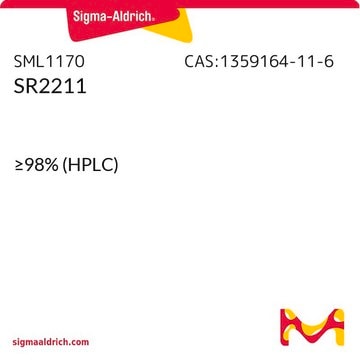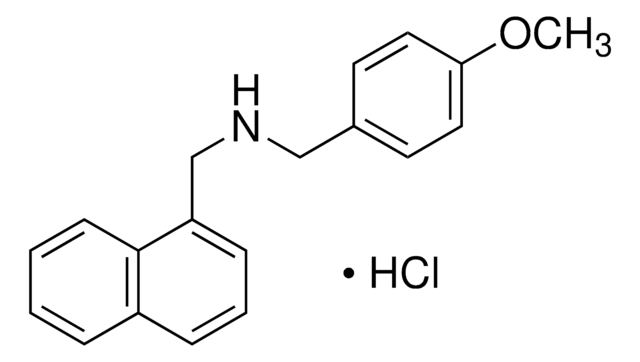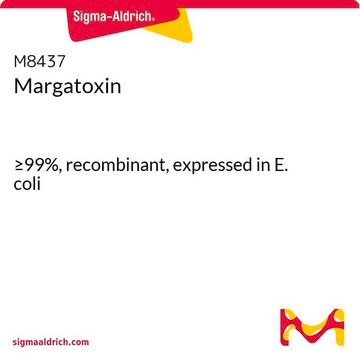F0430
Fenobam
≥98% (HPLC), solid
Synonyme(s) :
N-(3-Chlorophenyl)-N′-(4,5-dihydro-1-methyl-4-oxo-1H-imidazole-2-yl)urea
About This Item
Produits recommandés
Pureté
≥98% (HPLC)
Forme
solid
Couleur
white
Solubilité
DMSO: >20 mg/mL
Auteur
Johnson & Johnson
Température de stockage
2-8°C
Chaîne SMILES
CN1CC(=O)N=C1NC(=O)Nc2cccc(Cl)c2
InChI
1S/C11H11ClN4O2/c1-16-6-9(17)14-10(16)15-11(18)13-8-4-2-3-7(12)5-8/h2-5H,6H2,1H3,(H2,13,14,15,17,18)
Clé InChI
DWPQODZAOSWNHB-UHFFFAOYSA-N
Actions biochimiques/physiologiques
Caractéristiques et avantages
Code de la classe de stockage
11 - Combustible Solids
Classe de danger pour l'eau (WGK)
WGK 3
Point d'éclair (°F)
Not applicable
Point d'éclair (°C)
Not applicable
Équipement de protection individuelle
Eyeshields, Faceshields, Gloves, type P2 (EN 143) respirator cartridges
Certificats d'analyse (COA)
Recherchez un Certificats d'analyse (COA) en saisissant le numéro de lot du produit. Les numéros de lot figurent sur l'étiquette du produit après les mots "Lot" ou "Batch".
Déjà en possession de ce produit ?
Retrouvez la documentation relative aux produits que vous avez récemment achetés dans la Bibliothèque de documents.
Articles
Sigma-Aldrich offers many products related to G-protein family glutamate receptors for your research needs.
DISCOVER Bioactive Small Molecules for Neuroscience
Notre équipe de scientifiques dispose d'une expérience dans tous les secteurs de la recherche, notamment en sciences de la vie, science des matériaux, synthèse chimique, chromatographie, analyse et dans de nombreux autres domaines..
Contacter notre Service technique







